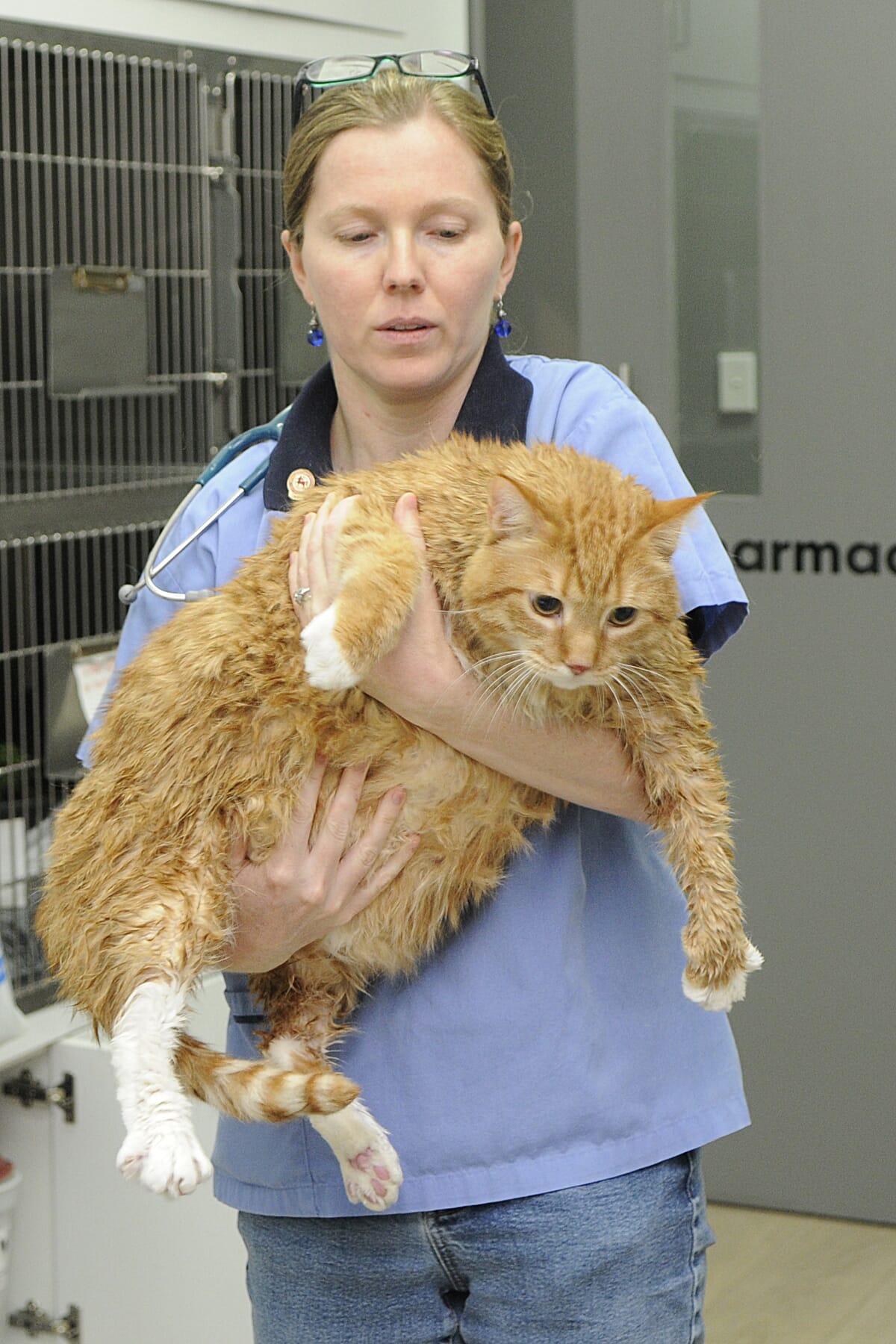The prevalence of obesity in cats is growing, and just as their human counterparts suffer the consequences of obesity, so do cats, with diabetes mellitus, constipation, urinary tract disease and osteoarthritis occurring as comorbidities. The lifestyle of a modern “couch potato” (Figure 1) is different from the feral or farm cat of 30 years ago, with freely available food and no need to move far to access it. Weight loss plans can be effective, but clients are more likely to be successful with support from the veterinary clinic. Following a successful round-table hosted by Royal Canin on “tackling fat cats” at London Vet Show 2017, this article discusses some of the areas to consider when implementing weight management programmes for cats.

Having “that” conversation
It is very unusual for a cat to be presented to the clinic for obesity as a clinical problem, and for a veterinary surgeon, nurse or technician, raising the subject may feel awkward. Phillips et al. (2017) showed that discussions about obesity, nutritional history and management rarely took place in their study of feline consultations. This study suggested that strategies such as talking to the cat directly instead of the client and using gentle humour may help start this conversation. As difficult as such discussions are, they are worth some thought and discussion within the clinic team so weight gain is not a taboo topic in the consultation room. It goes without saying that weight should be recorded, ideally with body condition score, at every opportunity.
What happens next?
It is all very well identifying that a cat is overweight, but does your clinic have a consistent follow up to suggest to clients? Referral to a nurse-led weight management clinic, with the appointment or introduction made there and then, can encourage the client to take the observation of weight gain seriously and make them feel supported in approaching the issue. Weight management clinics can be successful and should utilise strategies such as “before and after” photographs and measurements of abdominal girth to encourage clients that progress is being made. Initially, two-weekly appointments to weigh the cat are appropriate to identify problems promptly.
Do the maths (and use the scales)
There is no getting away from doing some maths to work out how much to feed an overweight or obese cat for weight loss. Deciding on an “ideal” weight is a first step, with this weight calculated using body condition scoring (each score on a nine-point scale above five equates to 10 percent excess weight) or looking at a previous healthy adult weight for the cat. Feeding 30 to 40kcal/kg (ideal weight)/day should result in a steady weight loss of around 0.8 percent per week.
As much as an ideal weight is desirable, it may be unrealistic for some clients and their cats. Target weights can be smaller, realistic goals, reviewed once achieved, and with the knowledge that any weight loss is likely to provide health benefits for the cat. When calculating how much to feed, take into account current feeding practices. Ask clients to keep a diary of the cat’s normal diet (including treats and human food); this can help identify severe overfeeding where a slower calorie reduction may be appropriate to “ease” both cat and client into the weight management plan. For cats, a few extra kibbles can sabotage a diet, so encourage clients to use an electronic scale (Figure 2) to measure their cat’s food. Feeding cups are notoriously inaccurate.
In general, prescription diets provide a nutritionally balanced calorie reduction, often with a higher protein and fibre content to promote satiety. Reduction in volume of a maintenance diet could result in nutrient deficiencies, although in some cases over-feeding can be identified easily and cutting out treats and stopping ad libitum feeding will make a difference. Supervision and regular weighing should still be encouraged.
Ditch the bowl
Traditionally, cats are fed once or twice a day, or ad libitum, in a bowl. It requires very minimal effort or activity to ingest sufficient, and then excessive, calories. Contrast this with the lifestyle of the ancestors of modern cats, which would eat several small meals a day, from multiple hunting trips, of which only around half would be successful.
Puzzle feeders (Figure 3) allow cats to use their hunting instincts and encourage movement to obtain food. Informing and encouraging clients to use puzzle feeders, even to provide all food via such feeders, may help a weight loss program, and reduce begging behaviour and encourage activity. Puzzle feeders can be purchased or home-made and inexpensive; and if carefully introduced, clients can avoid frustrating the hungry cat. To avoid frustration, follow the steps below and direct clients to the International Cat Care website for more information.
- Continue to offer some of the daily allowance in a bowl to start with
- Initially sprinkle food around, as well as in, the puzzle feeder
- Start with transparent feeders so the cat can see the food within
- Initially set the feeder to “easy” or leave larger holes in treat balls so it is easy for the cat to get the food
- Gradually reduce the amount of food given in a bowl and provide more in the puzzle feeder
Get them moving
Overweight cats are less active than lean cats and encouraging increasing activity may assist weight loss. Even the most idle cat often can’t resist a fishing toy (Figure 4), and electronic mice or even a simple ping pong ball can get a cat moving. Importantly, for many clients, feeding their cat is a source of pleasure and interaction with their cat. Replacing treats with a toy may help an owner feel they are not missing out on contact with their pet.
Get them into the clinic
As we know, clients may not perceive weight gain as a clinical problem and therefore may not seek veterinary care until their cat is unwell. Identifying weight gain at an early stage is vital to prevent seeing cats as obese older adults. Risk factors for obesity include neutering and a yearly gain of just 200g, which will result in obesity once the cat reaches six to eight years of age. Therefore, it is desirable to encourage weight checks for juvenile and young adult cats and discussions with owners on appropriate nutrition and methods of feeding.
Obesity is likely to have negative implications for a cat’s health. Veterinary staff should develop a common strategy around discussing weight gain with clients with a clear route of referral to a weight management clinic. Diet, activity and methods of feeding should be combined with support from the clinic to result in effective weight loss.
A full reference list is available on request.
FURTHER INFORMATION
The International Society of Feline Medicine’s “Cat Friendly Clinic” scheme aims to remove barriers to clinic visits; for more information, visit: catfriendlyclinic.org
Visit: catcare4life.org for information on the International Cat Care “CatCare for Life” initiative to encourage regular preventative healthcare for cats
To view Sam Taylor’s recent webinar on feline obesity, visit: vetportal.royalcanin.co.uk/cpd/webinars/







